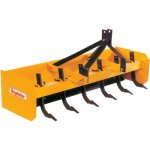jemclimber
Bronze Member
Do you intend on running another brace from the vertical upright to the second horizontal brace?

............... run angle iron not only from the front bar but continuously to the one behind it and connect the pins off those. The clevis is a good design for capturing the lower links in the strongest way possible.